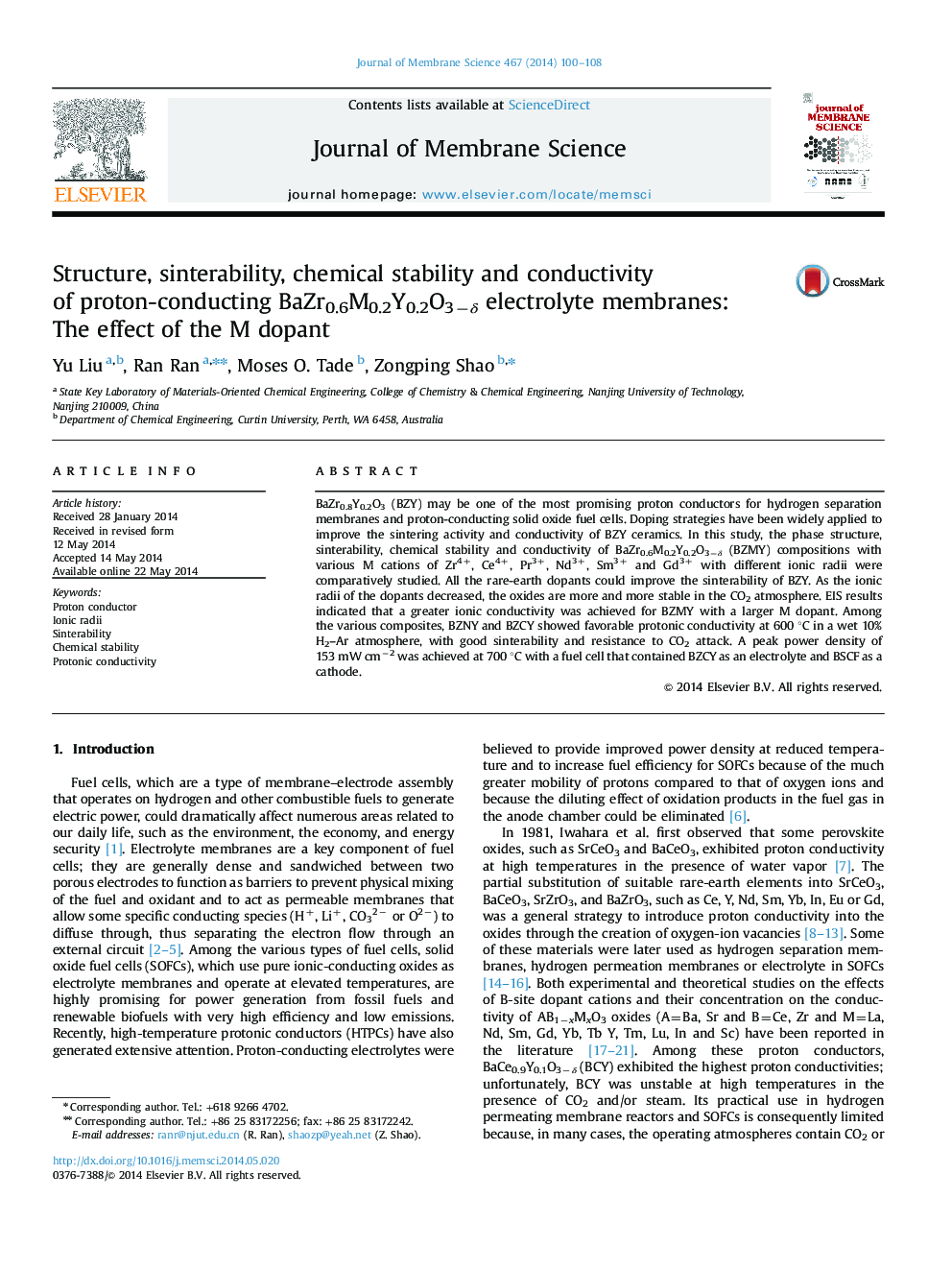| کد مقاله | کد نشریه | سال انتشار | مقاله انگلیسی | نسخه تمام متن |
|---|---|---|---|---|
| 633406 | 1456032 | 2014 | 9 صفحه PDF | دانلود رایگان |

• B-site of BaZrO3 oxides were co-doped with two lanthanides.
• Dopants had effects on the properties and performances of BaZrO3 oxides.
• BaZr0.6Nd0.2Y0.2O3−δ exhibited the highest protonic conductivity.
• Fuel cell with BaZr0.6Ce0.2Y0.2O3−δ electrolyte showed an excellent performance.
BaZr0.8Y0.2O3 (BZY) may be one of the most promising proton conductors for hydrogen separation membranes and proton-conducting solid oxide fuel cells. Doping strategies have been widely applied to improve the sintering activity and conductivity of BZY ceramics. In this study, the phase structure, sinterability, chemical stability and conductivity of BaZr0.6M0.2Y0.2O3−δ (BZMY) compositions with various M cations of Zr4+, Ce4+, Pr3+, Nd3+, Sm3+ and Gd3+ with different ionic radii were comparatively studied. All the rare-earth dopants could improve the sinterability of BZY. As the ionic radii of the dopants decreased, the oxides are more and more stable in the CO2 atmosphere. EIS results indicated that a greater ionic conductivity was achieved for BZMY with a larger M dopant. Among the various composites, BZNY and BZCY showed favorable protonic conductivity at 600 °C in a wet 10% H2–Ar atmosphere, with good sinterability and resistance to CO2 attack. A peak power density of 153 mW cm−2 was achieved at 700 °C with a fuel cell that contained BZCY as an electrolyte and BSCF as a cathode.
Journal: Journal of Membrane Science - Volume 467, 1 October 2014, Pages 100–108